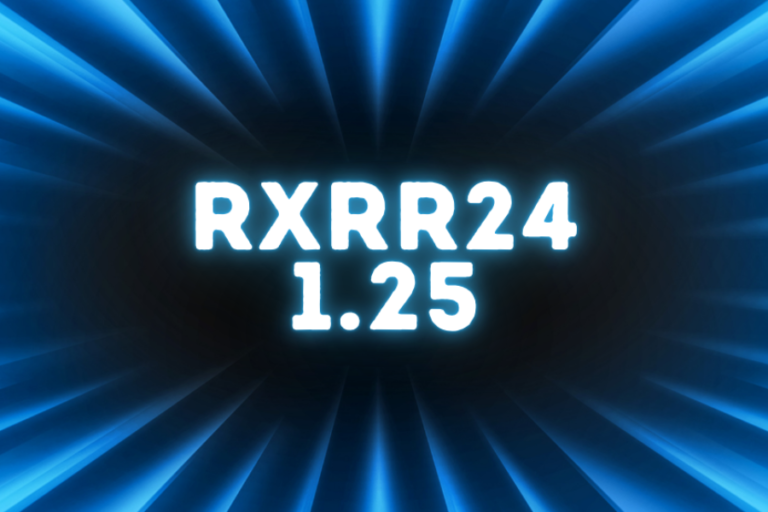A Comprehensive Guide to SSIS-950: Unlocking New Possibilities in Data Integration
Introduction
In today’s digital age, data drives nearly every aspect of business operations. From customer insights to operational efficiency, effective data management is crucial for organizations to remain competitive. One of the tools that has emerged as indispensable in this domain is SSIS-950, an advanced iteration of SQL Server Integration Services (SSIS), a widely-used Microsoft data integration platform.
SSIS-950 builds upon the foundation of previous SSIS versions and introduces new capabilities designed to meet the needs of modern businesses dealing with large datasets, complex data pipelines, and increasingly sophisticated cloud environments. This guide will dive into the features, benefits, use cases, and best practices of SSIS-950, helping businesses understand how they can leverage its full potential to streamline data integration, reduce operational costs, and enhance decision-making.
What Makes SSIS-950 Different?
SSIS-950 is a marked improvement over previous SSIS versions, incorporating new features that make it more powerful, scalable, and adaptable to the modern data landscape. The primary areas where SSIS-950 excels include:
- Cloud Integration: Enhanced support for cloud environments like Azure, allowing seamless management of hybrid data infrastructures.
- Real-Time Data Processing: Improved capabilities for near real-time data processing and integration, ensuring businesses have access to the most current data.
- Advanced Data Transformation: New transformation tools for complex data cleansing, validation, and manipulation, allowing for higher-quality and more reliable datasets.
- Improved Scalability: SSIS-950 can handle larger datasets and more complex workflows, offering better performance in demanding scenarios.
- Enhanced Error Handling: Robust error handling and debugging tools help developers quickly resolve issues, reducing the time spent troubleshooting and increasing operational uptime.
These enhancements make SSIS-950 an essential tool for businesses that require efficient and reliable data integration, especially in the era of big data, machine learning, and cloud computing.
Key Features of SSIS-950
Cloud Integration Support
One of the most significant improvements in SSIS-950 is its seamless integration with cloud platforms, especially Microsoft Azure. Many organizations are now operating in hybrid cloud environments where data is stored across both on-premise systems and cloud-based platforms. SSIS-950 makes it easier for businesses to manage data transfers between these environments, supporting cloud-based data lakes, Azure Blob Storage, and other cloud services.
This capability allows for the efficient migration of data, real-time integration, and synchronization between cloud systems and on-premises databases. This flexibility is critical for organizations looking to scale their operations and move more of their data workloads to the cloud.
Real-Time Data Processing
In the modern business world, the ability to access up-to-date information is crucial for decision-making. SSIS-950 supports near real-time data integration, allowing businesses to move and process data continuously. This means that data is no longer bound by batch processing limitations and can be delivered as soon as it’s generated.
For example, in an e-commerce environment, SSIS-950 can be used to update inventory, customer records, and order information in real time, ensuring that business teams are always working with the most current data available.
Advanced Data Transformation Tools
SSIS-950 comes equipped with a comprehensive set of transformation tools that allow users to cleanse, validate, and aggregate data before it reaches its destination. These tools help improve the overall quality of data, ensuring that only accurate, relevant, and consistent information enters your systems. Some key features include:
- Data Cleansing: Automatic identification and correction of data errors.
- Data Type Conversion: Transformation of data into the appropriate formats for the target system.
- Aggregations and Calculations: Real-time aggregations and calculations on data sets, reducing the need for additional processing outside of SSIS.
These advanced transformations make SSIS-950 a powerful tool for managing complex data workflows and improving the quality of data stored in databases or used for analysis.
Improved Scalability
The scalability of SSIS-950 has been greatly enhanced to accommodate growing data volumes and increasingly complex processing tasks. Through improved memory management and multi-threading capabilities, SSIS-950 can handle larger datasets and more complex data pipelines with higher efficiency.
This scalability ensures that SSIS-950 remains performant even in large-scale enterprise environments or when dealing with big data applications. As organizations continue to grow, SSIS-950 is able to scale along with their needs, offering a future-proof solution for data integration.
Error Handling and Debugging
SSIS-950 introduces more advanced error-handling features, making it easier for developers to identify and fix issues during data integration processes. Its comprehensive logging and debugging tools allow you to trace data flows, pinpoint where errors occur, and take corrective action swiftly. This reduces downtime, minimizes data inconsistencies, and improves overall system reliability.
Benefits of Using SSIS-950
Streamlined Data Processes
At the core of SSIS-950 is its ability to simplify the process of extracting, transforming, and loading (ETL) data. With its intuitive interfaces, built-in connectors, and advanced transformation tools, SSIS-950 enables businesses to automate and streamline their data workflows. As a result, organizations can reduce the time and effort spent managing data, freeing up resources for more strategic initiatives.
Cost Efficiency
Automating complex data workflows and minimizing manual intervention leads to significant cost savings. With SSIS-950’s enhanced performance and scalability, businesses can handle larger datasets and more complex operations without the need for additional resources. This efficiency reduces labor costs and operational overhead, ultimately improving the bottom line.
Improved Data Quality
SSIS-950’s comprehensive suite of data transformation tools ensures that only high-quality data makes it to the final destination. By automatically cleansing, validating, and transforming data, SSIS-950 helps organizations avoid errors that could lead to inaccurate reports or business decisions.
Enhanced Decision-Making
In the fast-paced world of business, timely data is key to making informed decisions. SSIS-950’s real-time data processing capabilities allow decision-makers to access up-to-date information as it becomes available. This enables businesses to respond faster to market changes, customer needs, or operational challenges.
Reduced Risk of Data Errors
SSIS-950 reduces the likelihood of data inconsistencies, errors, and failures through its built-in error-handling mechanisms. By catching issues early in the data integration process, SSIS-950 ensures that businesses are working with accurate, reliable data.
Faster Deployment
Pre-built connectors, templates, and the user-friendly interface of SSIS-950 allow businesses to quickly deploy data integration solutions with minimal effort. Even teams with limited coding experience can use SSIS-950 to set up and manage complex data workflows, speeding up project timelines.
Use Cases: Where SSIS-950 Shines
1. E-commerce Data Integration
E-commerce platforms often deal with large amounts of data from various sources, including customer information, orders, product catalogs, and more. SSIS-950 simplifies the integration of these data sources, allowing businesses to update their inventories, synchronize customer data, and process orders in real time.
2. Financial Data Consolidation
In the finance industry, accurate and timely reporting is crucial. SSIS-950 can consolidate data from multiple accounting systems, banking institutions, and financial platforms, ensuring that finance teams always have access to the most up-to-date financial data for decision-making.
3. Healthcare Data Management
Healthcare providers often have to manage vast amounts of sensitive patient data from various systems. SSIS-950 plays a critical role in integrating data from electronic health records (EHR), lab results, insurance claims, and other sources. This integration ensures that healthcare providers have a comprehensive view of patient data, improving care and operational efficiency.
4. Business Intelligence (BI) and Analytics
Businesses that rely on Business Intelligence (BI) tools need accurate, up-to-date data to generate meaningful insights. SSIS-950 helps organizations integrate data from multiple sources into BI platforms, ensuring that decision-makers have access to timely and relevant information for strategic decisions.
5. Cloud Migration Projects
As more businesses migrate to the cloud, SSIS-950 simplifies the process of transferring large datasets from legacy on-premises systems to modern cloud infrastructures. Whether moving data to Azure or other cloud providers, SSIS-950 makes cloud migration more efficient and less error-prone.
Getting Started: Tips and Best Practices
Plan Your Data Flow
Before diving into SSIS-950, it’s essential to map out your data flow. Identify the sources, transformations, and destinations for your data to ensure a smooth integration process.
Use Pre-built Components
SSIS-950 comes with numerous pre-built components, templates, and connectors for popular data sources. Leverage these tools to save time and reduce the potential for errors.
Monitor and Optimize Performance
Even though SSIS-950 is designed to handle large datasets, it’s important to monitor performance regularly. Look for bottlenecks in your data flows and optimize accordingly to maintain smooth operations.
Implement Strong Security Protocols
Protect sensitive data by configuring appropriate encryption and access control settings within SSIS-950. Ensure compliance with industry standards and regulations to safeguard data.
Leverage Training Resources
Microsoft offers comprehensive documentation, online training, and community support for SSIS. Familiarizing yourself with these resources will help you get the most out of SSIS-950.
Future Outlook for SSIS-950
As data volumes continue to grow, and as more businesses embrace cloud-first strategies, SSIS-950’s relevance will only increase. Microsoft is committed to enhancing SSIS with new features and better integrations with emerging technologies, such as artificial intelligence (AI) and machine learning (ML). These advancements will further solidify SSIS-950’s position as a critical tool for data integration in the years to come.
Conclusion
SSIS-950 is a powerful, versatile tool that simplifies and streamlines the process of data integration for businesses across various industries. With its enhanced cloud support, real-time processing, and advanced data transformation capabilities, SSIS-950 enables organizations to manage increasingly complex data workflows and unlock the full potential of their data.
By adopting best practices, investing in training, and staying up to date with new features, businesses can maximize the benefits of SSIS-950, drive efficiency, and gain a competitive edge. Whether you’re in e-commerce, finance, healthcare, or any other industry, SSIS-950 can help you take your data integration strategies to the next level.
FAQs:
1. What is SSIS-950?
SSIS-950 is an advanced version of SQL Server Integration Services, a tool used for extracting, transforming, and loading (ETL) data in data integration processes. It introduces enhanced cloud support, real-time data processing, and advanced data transformation features.
2. How does SSIS-950 handle cloud integration?
SSIS-950 offers improved cloud integration, particularly with Microsoft Azure, allowing businesses to seamlessly manage hybrid data infrastructures and perform data migrations between on-premises systems and cloud platforms.
3. What industries can benefit from using SSIS-950?
SSIS-950 is ideal for industries like e-commerce, finance, healthcare, business intelligence, and cloud migration projects. It supports complex data workflows and is well-suited for organizations dealing with large datasets and real-time data requirements.
4. What are the real-time data processing capabilities of SSIS-950?
SSIS-950 enables near real-time data processing, which means data can be integrated and made available as soon as it is generated, supporting businesses in making timely, data-driven decisions.
5. How does SSIS-950 improve data quality?
With its suite of advanced data transformation tools, SSIS-950 automatically cleanses, validates, and transforms data, ensuring that only high-quality, accurate data is entered into the system.
6. What is the scalability of SSIS-950?
SSIS-950 is designed to handle large datasets and complex workflows, making it scalable to meet the demands of growing businesses and big data applications. It utilizes improved memory management and multi-threading for enhanced performance.
7. How can SSIS-950 be deployed quickly?
SSIS-950 comes with pre-built components, templates, and connectors for popular data sources, allowing businesses to quickly deploy data integration solutions with minimal effort.
8. What security features does SSIS-950 offer?
SSIS-950 supports strong security protocols, including encryption and access control settings, ensuring compliance with industry standards and safeguarding sensitive data.
Stay in touch to get more news & updates on Realblog!






